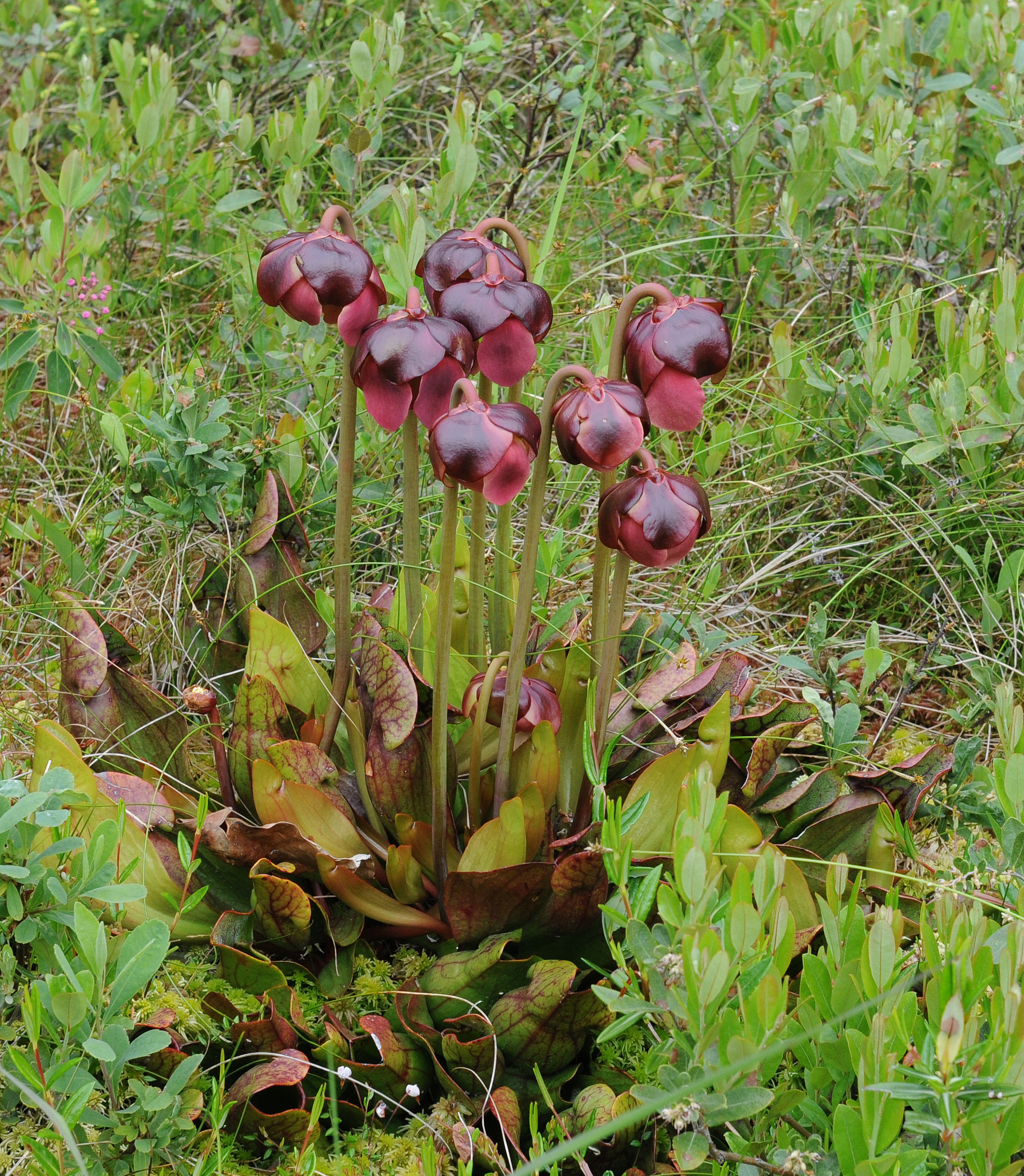Newfoundland and Labrador’s Carnivorous Symbol
Every province has a floral symbol that represents something about their province or territory. Newfoundland and Labrador is unique compared to all others in its choice of a provincial symbol. While Alberta chose a Wild Rose and Saskatchewan chose the Western Red Lily, Newfoundland appointed a carnivorous plant; the Pitcher Plant.
The Newfoundland Pitcher plant, named for its pitcher-like shaped leaves at the base of its stem, lures in insects by using its brightly coloured red veins as a means of attraction. The lips of the leaves have hairs that face downwards, making it easy for the insect to crawl towards the pool formed at the base of the leaves, but harder for them to crawl out. After a certain point, the hairs stop, and the leaf’s waxy surface causes the organisms to fall into the deadly pool contained within. This mechanism of feeding makes them quite unique as a floral emblem.
Every province has a floral symbol that represents something about their province or territory. Newfoundland and Labrador is unique compared to all others in its choice of a provincial symbol. While Alberta chose a Wild Rose and Saskatchewan chose the Western Red Lily, Newfoundland appointed a carnivorous plant; the Pitcher Plant.
The Newfoundland Pitcher plant, named for its pitcher-like shaped leaves at the base of its stem, lures in insects by using its brightly coloured red veins as a means of attraction. The lips of the leaves have hairs that face downwards, making it easy for the insect to crawl towards the pool formed at the base of the leaves, but harder for them to crawl out. After a certain point, the hairs stop, and the leaf’s waxy surface causes the organisms to fall into the deadly pool contained within. This mechanism of feeding makes them quite unique as a floral emblem.

“We [Newfoundland] are the only place in North America to have a symbol that has an active lifestyle,” said Todd Boland, a renowned Horticulturist from the Botanical Garden who has written multiple books on the Flora of the Atlantic Provinces.
Indeed, Newfoundland is the only jurisdiction in North America to have an official emblem that is a predatory plant. A plant that hunts its own prey may very well speak to the tenacity of the people it represents, but why does it need to live this way?
Pitcher plants grow in wetland environments, which---as the name implies--- are areas of land that are neither completely dry nor underwater. There are four major categories of wetland environments: bogs, fens, marshes, and swamps. These areas are distinguished from other environments by a combination of soil acidity, the flow of water as well as its source, and the dominant types of vegetation found in the area. The Pitcher Plant is most commonly found in bogs, which are acidic spots lacking in both nitrogen and oxygen.
When asked what the problem with an acidic environment is, Todd Boland explained, “If soil pH is too low, [plants] can’t uptake nutrients.” This leaves rainwater as their only source of nutrients, which is not enough to sustain themselves. Therefore, they had to find a new option. “They supplement their diets by extracting nutrients from dead organisms.”
How do they extract these nutrients? The deadly pool found within these flowers is a mixture of digestive enzymes, for breaking down the insects, and a wetting agent, responsible for preventing surface tension. The need to prevent surface tension comes from the fact that most insects are hydrophobic in some way, allowing them the ability to walk on water. This would hinder the plant’s ability to get a meal if their prey could simply float.
These adaptations have allowed this plant to thrive in an environment that was riddled with difficulties and challenges this species had to overcome in order to survive. It is no wonder that it was chosen as Newfoundland and Labrador’s provincial symbol, as it is an enduring species fitting for the people it represents.
By Emma Mitchell
[photo: Sarracenia purpurea, Newfoundland Pitcher Plant - Photo credit: Todd Boland.]